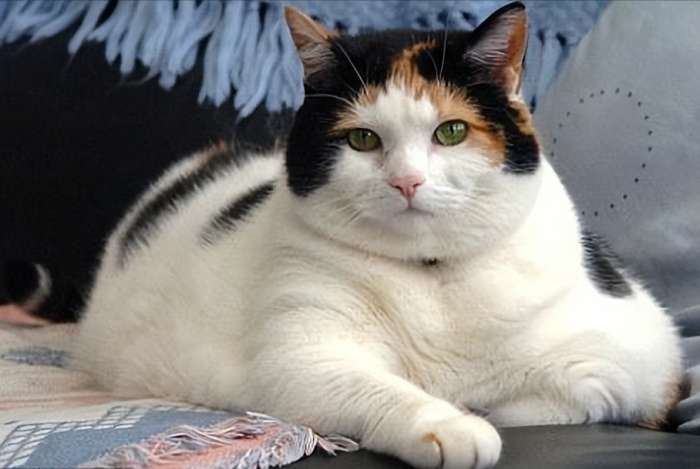Obesity in cats is a growing concern that affects their overall health and quality of life. As responsible pet owners, it’s crucial to understand how to prevent obesity and promote a healthy lifestyle for our feline friends. In this comprehensive guide, we will explore various strategies to help you keep your cat at a healthy weight.

1. Understanding Cat Obesity
What Is Obesity in Cats?
Obesity in cats is defined as excessive body fat that negatively impacts their health. It is often assessed using a Body Condition Score (BCS), with a score of 5 out of 9 being considered ideal. Cats that score above this are at risk of obesity-related health issues.
Why Is Cat Obesity a Concern?
Obesity can lead to numerous health problems, including:
- Diabetes: Overweight cats are more prone to insulin resistance, leading to diabetes.
- Arthritis: Extra weight places undue stress on joints, increasing the risk of arthritis.
- Decreased Lifespan: Obese cats may have a shorter lifespan due to related health issues.
Understanding the implications of obesity is crucial for taking preventive action.
2. Identifying Risk Factors for Cat Obesity
Common Causes of Obesity in Cats
Recognizing the factors that contribute to obesity is the first step in prevention:
- Overfeeding: Feeding cats larger portions or allowing free access to food can lead to weight gain.
- Lack of Exercise: Indoor cats may not get enough physical activity, leading to weight issues.
- Age and Metabolism: As cats age, their metabolism tends to slow down, making them more susceptible to gaining weight.
Breed Predisposition
Certain breeds are genetically predisposed to obesity, including:
- Persians
- British Shorthairs
- Ragdolls
Awareness of your cat’s breed can help tailor their diet and exercise plan.
3. Establishing a Balanced Diet
Choosing the Right Cat Food
Selecting high-quality cat food is critical for weight management:
- High Protein, Low Carb: Cats are obligate carnivores, and their diet should consist primarily of protein.
- Avoid Fillers: Choose foods that do not contain excessive fillers like corn or soy, as these can contribute to weight gain.
Portion Control
Monitoring portion sizes is essential in preventing obesity:
- Follow Feeding Guidelines: Use the feeding recommendations on the cat food packaging based on your cat’s weight and age.
- Use Measuring Tools: Employ measuring cups to ensure accurate portion sizes.
4. Implementing a Regular Feeding Schedule
Establishing a Routine
Creating a consistent feeding schedule can help regulate your cat’s metabolism:
- Feed Smaller Meals: Instead of free feeding, consider providing smaller meals at regular intervals.
- Avoid Free Feeding: This practice can lead to overeating, particularly in cats that are prone to weight gain.
Treat Moderation
Treats can add up in calories quickly:
- Limit Treats: Treats should only constitute about 10% of your cat’s daily caloric intake.
- Opt for Healthy Options: Choose low-calorie or natural treats that provide nutritional benefits.
5. Encouraging Regular Physical Activity
Daily Exercise Requirements
Cats need regular exercise to maintain a healthy weight:
- Interactive Playtime: Engage your cat with toys like feather wands, laser pointers, or balls to encourage physical activity.
- Scheduled Play Sessions: Aim for at least 15-30 minutes of play each day to keep your cat active.
Creating an Enriching Environment
An environment that encourages movement can significantly help:
- Cat Trees and Scratching Posts: Provide climbing structures that stimulate activity.
- Puzzle Toys: These can challenge your cat mentally and physically while hunting for treats.
6. Monitoring Your Cat’s Weight
Regular Weigh-Ins
Keeping track of your cat’s weight is essential for preventing obesity:
- Weekly Weigh-Ins: Weigh your cat weekly to monitor any changes using a reliable scale.
- Body Condition Score: Regularly assess your cat’s BCS to determine if they are at a healthy weight.
Consult Your Veterinarian
Routine veterinary check-ups are vital:
- Professional Guidance: Your veterinarian can provide personalized dietary and exercise advice.
- Weight Management Plans: If your cat is overweight, your veterinarian can help create a tailored weight loss plan.
7. Recognizing Behavioral Issues
Emotional Eating in Cats
Cats can also experience emotional eating, just like humans:
- Identify Triggers: Observe stressors that might lead your cat to overeat, such as changes in the household.
- Provide Alternatives: Offer interactive toys or additional playtime to distract from stress-related eating.
Socialization
Socialization plays a role in your cat’s well-being:
- Encourage Interaction: Spend quality time with your cat to strengthen your bond and reduce anxiety, which can help prevent overeating.
8. Lifestyle Changes for Overweight Cats
Gradual Weight Loss
If your cat is overweight, gradual weight loss is crucial:
- Set Realistic Goals: Aim for a weight loss of about 1% to 2% of body weight per week, as recommended by your veterinarian.
- Monitor Progress: Keep track of your cat’s weight loss journey to adjust their diet and exercise plan as necessary.
Behavioral Modifications
Consider behavioral changes to assist in weight management:
- Use Feeding Toys: Feeding toys can slow down eating and encourage activity.
- Limit Access to Food: Ensure that your cat cannot access other pets’ food, which can lead to overeating.
9. Conclusion
Preventing obesity in cats requires a comprehensive approach that includes understanding their dietary needs, encouraging physical activity, and monitoring their weight. By following these guidelines, you can help ensure that your cat lives a long, healthy, and happy life.

Comments (0)